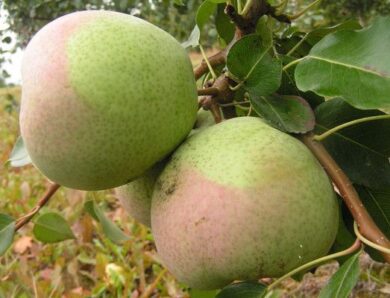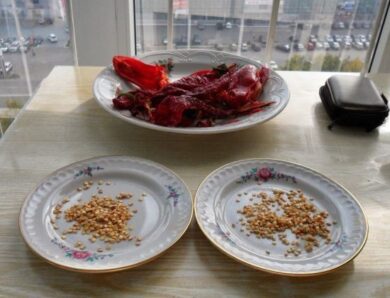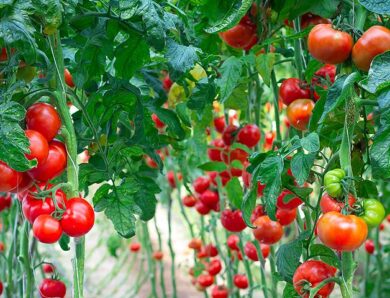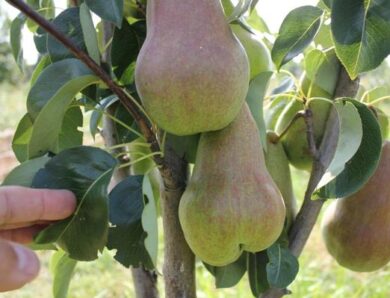Pissard's plum: decorative plum with red leaves
Among the variety of varieties of plum trees, a group of decorative plum varieties stands out very clearly. These plants are grown not only because of their fruits, but also for aesthetic purposes. Pissard's plum belongs to such grades, which will be discussed in this article.
Description of trees and fruits
Red plum, or Pissard's plum was imported to Europe from Iran, and quickly gained popularity among gardeners.
The tree grows quite tall, its maximum height can reach 12 m, however, on average they do not grow anymore 7-9 m. The trunk is brown, not too long. The crown is quite thickened, has a spherical or oval shape. Young shoots have a reddish tinge, but over time, noticeably darken.
The leaves of this ornamental plum are elliptical and crimson in color. One of the features of this variety is that, that the leaves retain their exotic red color throughout the cycle. Pissard's buds are painted in a beautiful pale pink color, and you can see them in April. Eventually, they bloom and small white flowers appear.
Now let's move on to describe the fruits of this plum tree. They themselves are not very big, on average, their weight is about 30 G, the top is covered with a skin of rich dark burgundy color. Inside you can find a fairly large oval bone. Despite the fact that the fruits themselves are small, quite a lot of them ripen, so that you can reap a bountiful harvest.
It is also worth considering, planting this tree with red leaves is more about the human eye, than for the sake of delicious fruit (they do not have outstanding taste characteristics). Harvesting can begin in late summer, though unless you're in a hurry, no problem - the fruits hang on the tree until mid-autumn.
The tree feels great in temperate climates, drought tolerant. However, excess moisture has a very negative effect on plums. In addition to moisture, Pissarda also does not tolerate low temperatures, therefore it is better not to grow it in cold regions.
Rules for planting seedlings
Plant plums or in the fall, or in the spring. To begin, choose a suitable place for planting, given the following factors:
- And the place needs to be well lit., so take care of it, so that the plum tree is not in the shade of other trees or buildings.
- There should be no other plants around the tree, otherwise it will not be able to grow normally.
- The soil should be selected light and loose. Also pay attention to the groundwater level - it should not be high. Otherwise, you will have to take care of drainage when planting.
- Plant a tree in such a place, where there will be no strong gusty wind, otherwise there is a chance, that it will live very short.
Now let's move on to the landing itself.
For 2-3 weeks it is necessary to prepare a planting hole. Its depth and width should be 50 see and 70 see respectively. At the bottom of the pit pour a fertile layer of soil, pre-mixing it with humus, and set the landing number.
It is necessary to place a sapling in a hole very accurately, so that its roots do not break. The root collar should be a few inches above ground level. When the seedling is sprinkled with earth, you need to tie a tree to a peg, so that it does not break from the wind. Immediately after planting, you need to mulch the soil around the tree, and abundantly watered it.
Agricultural cultivation techniques
Caring for a Pissard plum is not very difficult, however, to achieve maximum results, the following recommendations must be followed:
- watering. The plant should be watered abundantly and regularly. Usually, should be watered every two weeks. On one tree goes from 4 to 6 bucket of water. But remember that, that too frequent watering can lead to root rot, so watch out for that, so that the top layer of soil is completely dry, and only then water;
- pruning. An annual procedure is required. Relieving trees from broken and withered branches, you will reduce the risk of various diseases, and provide healthy branches with access to sunlight;
- top dressing. In the first year of life of a tree it is possible to do without them, but then the plums need to be fertilized regularly. In the fall, example, humus is introduced, but in the spring you need potash fertilizers. When the plum begins to bear fruit, recommend helping the tree, making urea fertilizers;
- shelter for the winter. In view of the, that Pissarda is a thermophilic variety, you should take care of that, that the downpour survived the winter. To do this, it is prepared for winter, watering, mulching the soil, and then covering the trunk with straw or peat.
Diseases and pests
Although Pissard's plum has a good immunity, however, she may suffer from some diseases. The most common are powdery mildew and necrosis of the trunk. Powdery mildew can be disposed of with fungicides, but the tree can be saved from necrosis in the early stages, trimming all affected areas (if possible).
That problems with diseases and pests did not arise, the following rules must be followed:
- Prune the tree in time.
- Burn remote infected parts of the plant, rather than leave it on the ground near a tree.
- Regularly mulch the ground of the trunk circle and get rid of weeds.
- Make fertilizer and make sure, that the plant had good immunity.
- To prevent insects, carry out spring treatment with insecticides, for example "Actor".
Video "Planting and fertilizing plums"
In this video you will learn about it, how to properly plant and fertilize plums in the garden.




